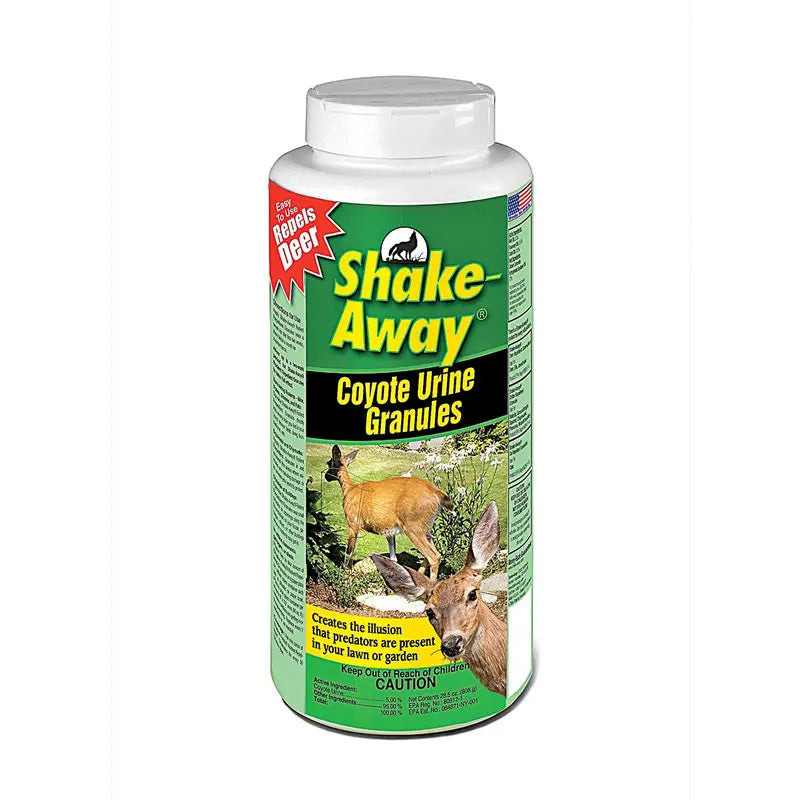Successful Ways to Deal with Deer
Q. Susan in Cambridge (on the Eastern Shore of Maryland) writes: “Hi Mike! I’m a former Bucks County listener who still loves all things Philly—especially the accent, cause I got it too!
“Anyway, hubby and I love it here on the Eastern Shore, but we’re at our wits end with the deer eating everything we try to plant around our new home. I saw a suggestion for Mylar tape and that sounds interesting. Any advice for us?”
A. Accent? Yo! Wha’ accent? Sounds like youse need to open up some windas and drink more warder!
[ahem] I think you’re referring to a product called “Bird Scare Flash Tape”; the original version (which is still around) comes on a roll and is about as wide as reel-to-reel recording tape. But there are now many similar options, including some versions as wide as duct tape. Flash Tape is designed to move around in the slightest breeze, reflecting all sorts of bright and shiny colors and make a snapping noise as it's waving in the wind.
Originally designed to scare birds away from fruits like Strawberries, Serviceberry, blueberries and the like, it might scare deer away, especially in consistently windy areas (Hello Oklahoma!) and it’s an inexpensive option to try.
But my first personal (and pretty much obligatory) suggestion is deer fencing. I will never forget the photo that showed a wooded area with a fence down the middle that had been built to protect the edge of a native plant sanctuary. The sanctuary side remained unravaged. The unprotected area was dead, lifeless, and eaten to the ground.
Experts agree that properly installed deer fencing is the best protection. The materials that make up the fencing are designed to be invisible from twenty feet away, thanks to their color and design. But the fence needs to be really well-supported and seven feet tall. Some sources say six is high enough; others insist it should be eight feet tall. I have seen deer with broken legs writhing in gardens surrounded by six-foot high fencing and it was not pretty, so I vote for seven feet.
This is the most expensive option, but it amortizes well over the years and is perfect if you have a contained area to protect. (Just don’t try and save money if fencing is your choice; pay for high quality materials and expert installation or you’ll end up with an expensive failure.)
Some fed-up homeowners (and most arboretums and horticultural showplaces) have opted for fencing, with cattle guards in the ground to prevent deer from wandering down driveways and service roads.
Next up: Motion activated sprinklers! I use them to protect my raised beds and a few hosta lucky enough to be planted close-by. The devices have a ‘head’ that contains a motion detector, batteries to power it, and a stake to anchor it in the ground. You hook it up to a garden hose and leave the hose in the ‘on’ position.
When the motion detector senses a nearby object, it comes alive with a loud ‘spurt’ and shoots a couple cups of cold water at the object. The bigger the target the better; and deer are the perfect size. I went for the optional tall tripod instead of the included small ground stake, which greatly improved its usefulness. And yes, you will forget it's there and get a wake-up call one morning. Just don’t drop your coffee mug.
(Warning about ultrasonic motion detectors: While researching my choices for this piece, I came across a website that seemed to be a legitimate list of ways to repel deer. The site claimed that deer get used to being sprayed with water and the devices lose their effectiveness. Then I read further and the whole thing turned out to be a clever ad for a sonic motion detector, which research has shown not to work (in fact, roaches were attracted to a smaller indoor sonic device in one study).
But you can’t use it in freezing weather or your hose will burst, which brings us to The Wireless Deer Fence, which is still made and shipped by the family of the original inventor in Indiana. It costs seventy bucks for three devices and a pack of 36 deer-attracting scent pellets. That’s right: deer attracting!
There’s a metal ‘basket’ on top of the 19-inch round green device in which you place a scent pellet on a little peg. Then you install two AA batteries in the belly of the beast (protected from rain by O rings) and place it where you want to deter deer. The battery-powered capacitor inside builds up a charge, the deer are attracted by the scent pellet, lick it, get a mild shock and run off to eat somebody else’s salad greens. (It’s especially effective for low-to-the-ground plants.)
It is suggested that the batteries be replaced every six months, and the extra pellets are replacements to keep the scent strong. (The package comes with a small screwdriver-like device you use to safely replace the pellets.) I rely on these things in the winter (when I can’t use water) and to protect important plants not near the garden proper.
Repellants. You want a product with the strongest, most concentrated smell. To use repellants effectively, begin spraying your plants as soon as they leaf out in the Spring. But don’t waste money by spraying the whole plant! You want to spray a double dose right at deer ‘grazing height’, which is generally between three and five feet off the ground. That way, the deer will get a double mouthful of nasty and run away.
Spray that browsing area repeatedly early in the season and you may be able to ‘prime’ your four-legged foes into avoiding those plants later in the year!


